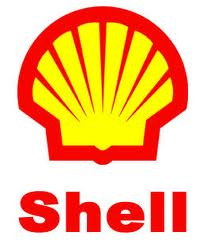Shale-based manufacturing renaissance sought in region
Article by Malia Spencer, Pittsburgh Business Times, January 10, 2013
Royal Dutch Shell’s proposed ethane cracker in Beaver County is an example of how the petrochemical business could be expanded in southwestern Pennsylvania, thanks to natural gas.
Petrochemical executives, academics and lawmakers convened Thursday for a frank discussion on how the growing natural gas boom in the tristate area can really spur a manufacturing renaissance.
The meeting, held downtown at the Renaissance Hotel, was organized by the industry trade association American Fuel and Petrochemical Manufacturers along with Carnegie Mellon University with the goal of kicking off a series of talks that would help the industry create a framework on how to best benefit from the shale boom.
The discussion focused on the attractive economics around using natural gas, instead of petroleum, to create compounds, such as ethylene, that are used in plastics and other industries.
One challenge that this boom brings is making sure the U.S. industry can stay on top of the innovation, said Andrew Gellman, head of the chemical engineering and Lord professor of chemical engineering at CMU. There is a sense of urgency, he said, because there are shale reserves globally. “Shale is everywhere, we need to get there first and stay there,” Gellman said.
Building off that notion Don Wardius, head of Renewable and Alternative Feedstocks Development at Bayer MaterialScience, said Bayer is looking at how to use methane, the dominate component in natural gas, to make liquids that are the basic building-block chemicals. In his company’s case, they want to see a research and development consortium built around how to turn methane into benzene, which is a raw material Bayer uses for the polymers in high-performance plastics.
It’s these sorts of challenges where industry can work with universities and federal labs to find solutions, according to Wardius and Gellman.
For companies looking to invest in capital projects, such as Shell’s potential ethane cracker in Beaver County, the economics have to be in place. Right now there are roughly $95 billion in announced chemical projects between 2013 and 2030, according to a presentation by Gary Adams, chief chemicals advisor at IHS Chemicals. Much of this activity is in the ethylene supply chain, which is where an ethane cracker falls.
Shell has yet to make a final decision on whether it will build a facility in the region. Bruce Macklin, senior vice president of global operations at ExxonMobil Chemicals Co., told the conference audience his company has also announced a new cracker project as part of an expansion to the company’s Baytown, Texas, petrochemical complex.
For ExxonMobil, it made more sense to leverage its existing facilities as it taps into the shale gas boom. The project has been announced, and the company is working through the permitting process but the final decision has not yet been made. In all likelyhood it will come down to the project cost estimates and where in its portfolio the company decides to invest, he said.
>> Malia Spencer covers manufacturing, higher education and technology for the Pittsburgh Business Times.
NOTE: Inside Shale Weekly is a radio program sponsored by the oil and gas industry. It is broadcast over WAJR 1440 AM out of Morgantown, WV. Today on this program, Nicholas “Corky” DeMarko, executive director of the WV Oil & Natural Gas Association, said that he is involved in confidential activity with others to locate an ethane cracker chemical plant in the Ohio River valley or the Kanawha River valley of West Virginia where adequate land area exists for such a plant. He expects an announcement sometime in 2013 and the possible start of construction in 2014.


{ 1 comment… read it below or add one }
So what’s the downside of this economical upturn? I noticed that Bayer is interested in benzene — a known carcinogenic compound. That’s worrisome.
The sense of urgency is also bothersome. Could it be that these companies are having a problem with competitive companies elsewhere, where they have no governmental influence?
I hope that the decision-makers comcerning these cracker plant operations have enough sense to investigate ALL the effects of these plants and not just the supposed economical benefits.
Sharron Burgess